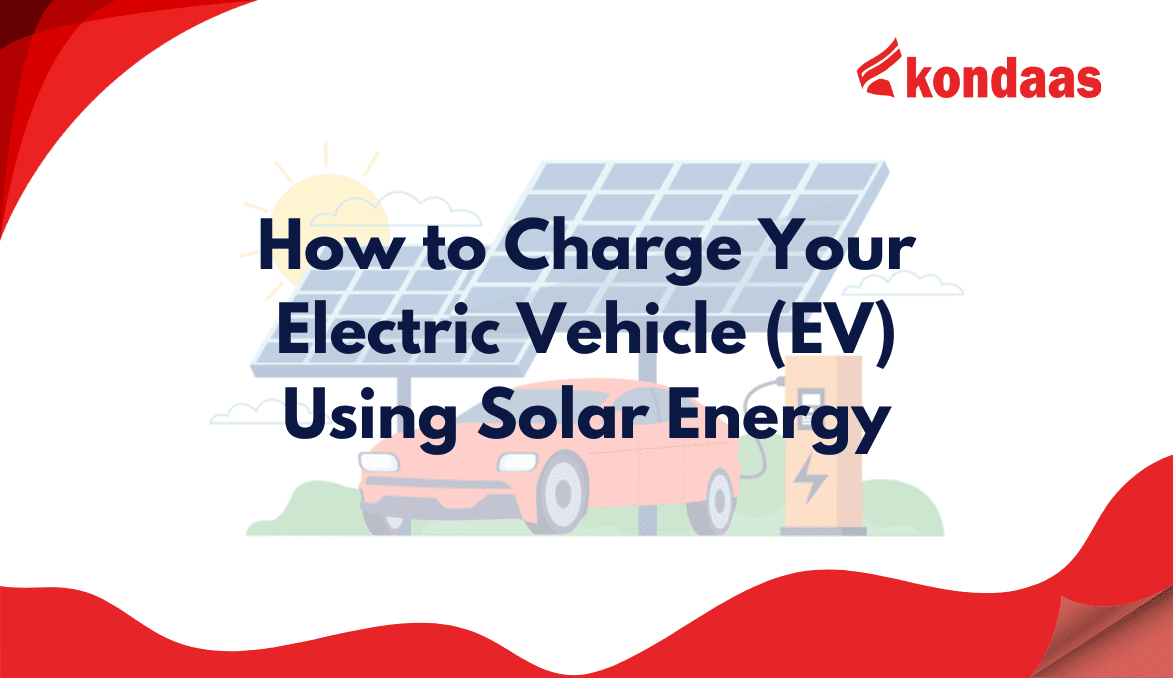Switching to electric vehicles (EVs) is already a step toward cleaner mobility — but if you’re still charging from the grid, you may be relying on fossil-fuel electricity. Charging your EV with solar lets you power your commute with free, clean sunlight.
Key benefits include:
- Lower running costs – Zero fuel bills after system payback
- Sustainability – Reduce lifetime emissions by up to 90%
- Energy independence – Less reliance on volatile electricity prices
- Convenience – Charge at home on your schedule
How Solar EV Charging Works
Solar EV charging uses photovoltaic (PV) panels to generate DC power, an inverter to convert it into AC, and an EV charger to safely deliver energy to your vehicle.
Three common system types:
- Grid-Tied – Uses solar first, draws from grid when needed
- Off-Grid – 100% solar-powered with batteries for night charging
- Hybrid – Combines solar, batteries, and grid backup for flexibility
Pro Insight: Most homeowners choose hybrid setups for year-round reliability.
What You Need to Charge an EV with Solar
To set up solar to charge car, you’ll need:
- Solar PV Panels – Capture sunlight and generate DC electricity
- Inverter – Converts DC to AC for chargers and appliances
- EV Charger – Regulates safe charging speed and voltage
- Battery Storage – Saves excess solar for night or cloudy days
Tip: Choosing the right inverter size is crucial — an undersized unit limits charging speed, while oversizing increases cost.
How to Charge an Electric Vehicle with Solar Power
To charge your EV using solar power, follow these steps:
Install a Solar Power System: Start by installing a PV solar power system on your property, typically on your roof or another location with direct sunlight. The number and capacity of solar panels will depend on your energy requirements and local sunlight availability. If you need any solar solution contact Kondaas Automation Private Limited for more details.
Connect the Solar Panels to an Inverter: Link the solar panels to an inverter to convert DC electricity to AC, which is required for EV charging.
Install an EV Charging Station: Place an EV charging station (EVSE) in a convenient location. The EVSE acts as an interface between the solar power system and your EV, managing the charging process and providing safety features.
Connect the Solar System to the EV Charging Station: Use proper wiring to connect the inverter’s output to the EV charging station. This enables the solar energy generated to be transferred to the charging station and ultimately to your EV.
Monitor the Charging Process: Use monitoring software to track solar power output and energy consumption. This allows you to optimize solar usage by scheduling EV charging during peak sunlight hours.
Note: Installation specifics may vary depending on your EV model, solar power system, and local regulations. Consulting with a professional solar installer and an electrician is highly recommended.
How Much Solar Energy is Needed to Charge an EV Car?
You can calculate solar size with:
“Solar kW size = (Battery capacity in kWh ÷ Sun hours per day) × (1 ÷ System efficiency)”
(System efficiency is usually 0.75–0.85)
| EV Model | Battery Size | Daily Range | Recommended Solar Size |
|---|---|---|---|
| Tata Nexon EV | 40 kWh | 312 km | ~6 kW |
| MG ZS EV | 50 kWh | 461 km | ~7.5 kW |
| Mahindra XUV400 | 39.4 kWh | 456 km | ~6 kW |
| BYD Atto 3 | 60 kWh | 521 km | ~9 kW |
Here is the Detailed Video Explaining It
Can You Fully Charge an EV from Solar Alone?
Yes, with the right solar EV systems, you can go 100% solar — but output varies by:
Battery capacity for night charging
Sunlight availability (seasonal changes matter)
System size and panel efficiency
How Long Does It Take to Charge an Electric Car with Solar Panels?
Charging time depends on:
- Solar system capacity
- EV charger type (AC or DC)
- Sunlight hours
Example: A 6 kW solar array with a Level 2 charger can fully charge a Tata Nexon EV in 6–8 hours of peak sunlight.
Cost, Incentives & Payback
Cost Breakdown:
- Solar PV system: ₹3–5 lakh (size-dependent)
- EV charger: ₹40,000–₹1 lakh
- Battery storage: ₹2–4 lakh (optional)
Government Incentives (MNRE):
- Up to 40% subsidy for residential rooftop solar
- Additional state-level incentives and net metering benefits
Payback Period: 5–7 years with daily charging and fuel savings.
How much CO₂ can I save by charging my EV with solar?
- Up to 4 tonnes of CO₂ saved per year compared to petrol cars
- Reduces strain on the grid during peak hours
- Supports renewable energy adoption in communities
Optimizing Solar Charging: Smart Features & Convenience
- Smart Charging – Schedules charging during solar peak hours
- Energy Management Systems – Tracks generation, storage, and usage
- Real-Time Monitoring – View performance from a mobile app
- Load Shifting – Prioritizes solar use, minimizes grid draw
What if my solar panels don’t produce enough power for my EV?
Challenges & Fixes:
- Insufficient output → Add panels or reduce daily distance
- Shading → Use microinverters or relocate panels
- Capacity mismatch → Upgrade inverter or charger
Conclusion
Switching to ev solar charging is an investment in sustainability, independence, and long-term savings.
Your next step? Get a tailored design from a trusted solar installation company that understands both EV charging and solar design.
FAQ
Yes, solar panels can charge your EV. Installing solar panels allows you to produce clean, renewable energy, reducing reliance on fossil fuels.
Install a solar PV system and a charging station, then connect the station to your EV.
Charging with solar offers cost savings, reduced carbon footprint, and greater energy independence.
Yes, you can install a solar EV charging station at home, which provides convenient and affordable charging.
Yes, consider the solar panel size, sunlight availability, and backup options during outages.

